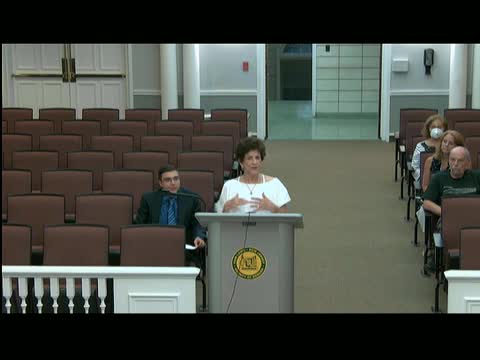Residents outraged as healthy trees are cut down
June 25, 2024 | Fair Lawn, Bergen County, New Jersey

This article was created by AI summarizing key points discussed. AI makes mistakes, so for full details and context, please refer to the video of the full meeting. Please report any errors so we can fix them. Report an error »

In a recent government meeting, concerns were raised regarding the removal of healthy trees under a newly implemented tree ordinance. A resident expressed frustration over a neighbor's decision to clear multiple trees after obtaining a permit, citing safety concerns after a dead branch nearly fell on a child. The resident questioned why the neighbor did not opt for pruning instead of complete removal, arguing that the ordinance could lead to excessive tree cutting if every dead branch is deemed a hazard.
The discussion highlighted a perceived gap in the ordinance, which only requires notification to neighbors if a tree borders their property line. The resident noted that this lack of communication could lead to significant changes in the local environment without community awareness. They reported a noticeable increase in temperature in their backyard following the tree removal, raising concerns about the broader ecological impact.
In response, a town supervisor acknowledged the limitations of the current ordinance, stating that while it represents an improvement, it does not prohibit tree removal entirely. The supervisor emphasized that mitigation measures are in place, requiring the planting of new trees based on the size of those removed. However, the resident pointed out that the time it would take for newly planted trees to mature would far exceed the immediate loss of the removed trees.
The meeting underscored the ongoing debate about balancing safety, property rights, and environmental stewardship within the community, with calls for stronger regulations to protect local greenery.
The discussion highlighted a perceived gap in the ordinance, which only requires notification to neighbors if a tree borders their property line. The resident noted that this lack of communication could lead to significant changes in the local environment without community awareness. They reported a noticeable increase in temperature in their backyard following the tree removal, raising concerns about the broader ecological impact.
In response, a town supervisor acknowledged the limitations of the current ordinance, stating that while it represents an improvement, it does not prohibit tree removal entirely. The supervisor emphasized that mitigation measures are in place, requiring the planting of new trees based on the size of those removed. However, the resident pointed out that the time it would take for newly planted trees to mature would far exceed the immediate loss of the removed trees.
The meeting underscored the ongoing debate about balancing safety, property rights, and environmental stewardship within the community, with calls for stronger regulations to protect local greenery.
View full meeting
This article is based on a recent meeting—watch the full video and explore the complete transcript for deeper insights into the discussion.
View full meeting
